From the Trenches
From Yacht to Trawler to Wreck
By SAMIR S. PATEL
Monday, December 07, 2015
Ituna began its life as a luxury steam yacht in Scotland in 1886. It went down as a fishing trawler off the California coast in 1920. In between, Ituna lived several other lives.
Researchers from the National Oceanic and Atmospheric Administration recently discovered the historic wreck 200 feet down, 24 miles from San Francisco, where it sank in a storm. As a luxury craft, with a hull designed by famed yacht designer George Lennox Watson, Ituna saw several owners before it was purchased by Allison V. Armour, a wealthy patron of the sciences. She sent the ship on a three-month research expedition to Mexico in 1894, which resulted in Archaeological Studies among the Ancient Cities of Mexico, an early and influential text on Mesoamerican archaeology. Twenty-two years later the ship was refitted as a first-class passenger cargo steamer, and then again two years later as a steam trawler with a crew of 14. The ship sank while transporting a cargo of fish-processing machinery and concrete. Images from the recent wreck discovery show the ship’s distinctive elliptical stern, trawl machinery, and triple-expansion steam engine.
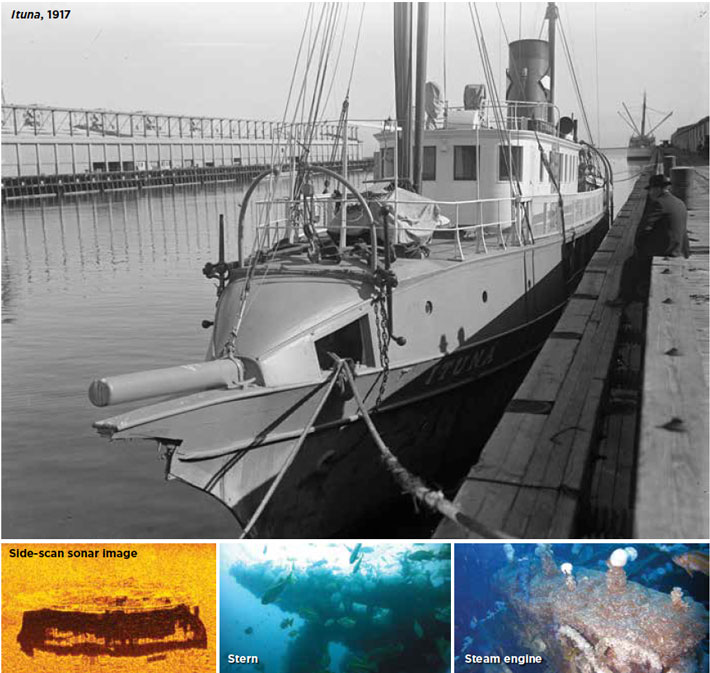
Under a Haitian Palace
By DANIEL WEISS
Monday, December 07, 2015
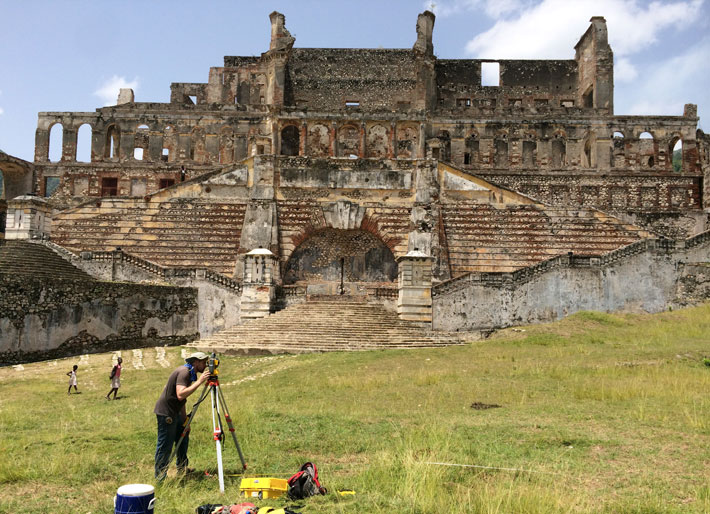
Archaeological digs have been rare in Haiti because of its political and civil instability. But last summer, a team led by J. Cameron Monroe of the University of California, Santa Cruz, began excavation at the Sans-Souci Palace in the town of Milot. The palace was built in the early nineteenth century by Henri Christophe, who took control of the northern part of the country in a civil war that broke out after independence from France.
The team located a major structure below the palace complex that they believe is an early phase of construction. Under it, they found a midden filled with domestic objects from the mid- to late eighteenth century, including ceramics imported from France and England, locally made tobacco pipes, and Afro-Caribbean potsherds.
Monroe believes the midden was most likely a trash dump from the colonial-era Milot Plantation, whose precise location has eluded researchers, and that its presence suggests that Christophe may have chosen to build his palace directly over the plantation. “The Haitian revolutionaries absolutely detested the French colonial presence,” he says. “So one could argue that building on top of the thing is a way of erasing that legacy from the landscape.”
Hidden Blues
By DANIEL WEISS
Monday, December 07, 2015
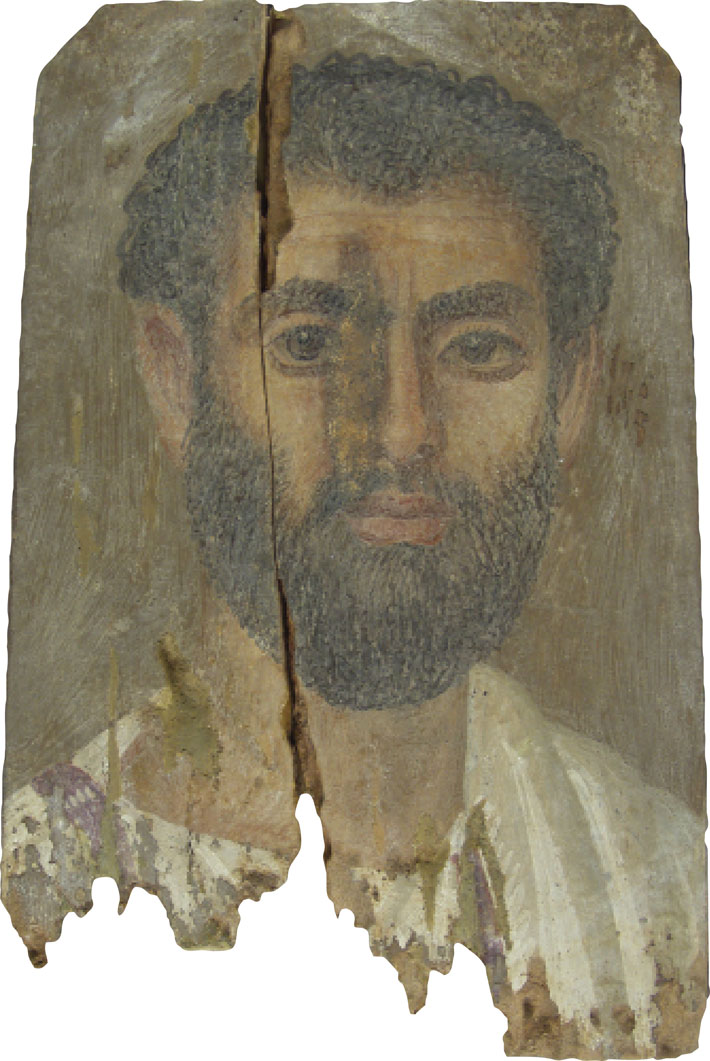 Researchers unexpectedly found evidence of Egyptian blue, the earliest known artificial pigment, in sections of paintings from Egypt’s Roman era that lack even a hint of visible blue coloring. These areas include swaths of gray background, a white tunic and mantle, and an under-drawing outlining a face. The paintings are part of a collection of mummy portraits and panel fragments housed at the Phoebe A. Hearst Museum of Anthropology at the University of California, Berkeley, and are thought to date to the second century A.D.
Researchers unexpectedly found evidence of Egyptian blue, the earliest known artificial pigment, in sections of paintings from Egypt’s Roman era that lack even a hint of visible blue coloring. These areas include swaths of gray background, a white tunic and mantle, and an under-drawing outlining a face. The paintings are part of a collection of mummy portraits and panel fragments housed at the Phoebe A. Hearst Museum of Anthropology at the University of California, Berkeley, and are thought to date to the second century A.D.
Using an array of technologies, including near-infrared luminescence and X-ray diffraction, the researchers were able to detect Egyptian blue, technically known as calcium copper tetrasilicate. The pigment may have been used to subtly modulate colors or add a shiny quality. It is also possible that Egyptian blue, used at least as early as 3100 B.C., was no longer a scarce commodity by the Roman era. “We have perceived it as a pigment that was rare and expensive,” says Jane Williams, a conservator at the Hearst Museum, “but maybe it wasn’t. Maybe it was just part of what was available in the mix.”
Mr. Jefferson’s Laboratory
By JASON URBANUS
Monday, December 07, 2015
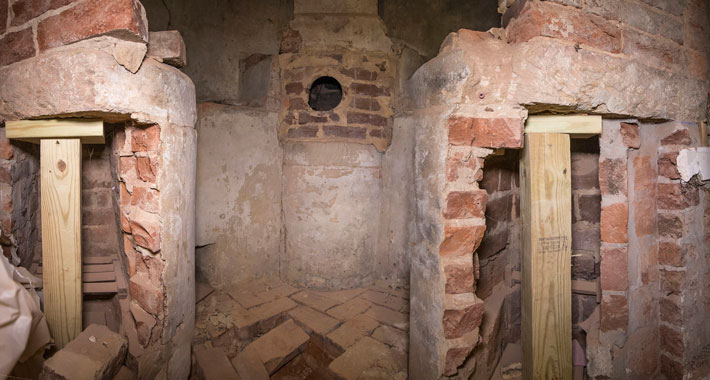 Renovations in the rotunda at the University of Virginia have led to the discovery of a nineteenth-century chemistry laboratory hidden in the building’s walls. The iconic Thomas Jefferson–designed rotunda was constructed in the 1820s as the centerpiece of the university he founded. Recently, while exploring a mysterious void within the walls on the bottom floor, workers found a chemical hearth, which apparently was used by Professor John Emmet during the university’s early years. According to Jefferson’s letters, he and Emmet discussed the location of the chemistry classroom. “For the Professor of Chemistry, such experiments as require the use of furnaces, cannot be exhibited in his ordinary lecturing room,” he wrote. “We therefore prepare the rooms under the oval rooms of the ground floor of the Rotunda for furnaces, stoves, etc.” It was also necessary to locate the chemistry lab on the lower floors so that water for the experiments would not have to be pumped upstairs. The semicircular niche was connected to a sophisticated ventilation system through a series of brick tunnels. The hearth was likely walled up in the 1840s when the chemistry department moved to a different location.
Renovations in the rotunda at the University of Virginia have led to the discovery of a nineteenth-century chemistry laboratory hidden in the building’s walls. The iconic Thomas Jefferson–designed rotunda was constructed in the 1820s as the centerpiece of the university he founded. Recently, while exploring a mysterious void within the walls on the bottom floor, workers found a chemical hearth, which apparently was used by Professor John Emmet during the university’s early years. According to Jefferson’s letters, he and Emmet discussed the location of the chemistry classroom. “For the Professor of Chemistry, such experiments as require the use of furnaces, cannot be exhibited in his ordinary lecturing room,” he wrote. “We therefore prepare the rooms under the oval rooms of the ground floor of the Rotunda for furnaces, stoves, etc.” It was also necessary to locate the chemistry lab on the lower floors so that water for the experiments would not have to be pumped upstairs. The semicircular niche was connected to a sophisticated ventilation system through a series of brick tunnels. The hearth was likely walled up in the 1840s when the chemistry department moved to a different location.
An Opportunity for Early Humans in China
By ZACH ZORICH
Monday, December 07, 2015
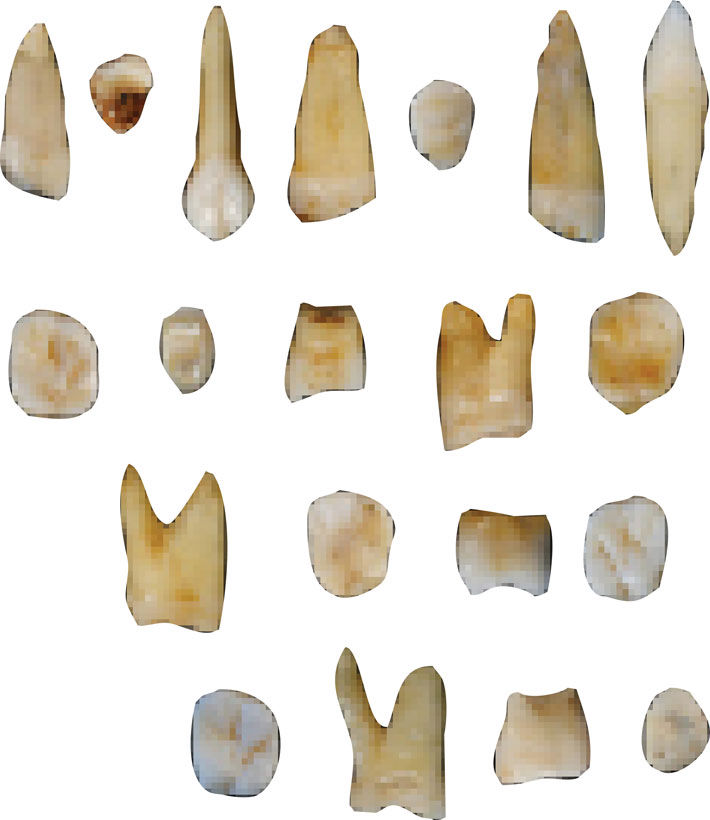 Fuyan Cave in southern China does not contain any artifacts, but it did have 47 teeth that came from the mouths of Homo sapiens at least 80,000 years ago. The find shows that our species had reached China more than 30,000 years before entering Europe, and is changing ideas about how Homo sapiens settled the world beyond Africa.
Fuyan Cave in southern China does not contain any artifacts, but it did have 47 teeth that came from the mouths of Homo sapiens at least 80,000 years ago. The find shows that our species had reached China more than 30,000 years before entering Europe, and is changing ideas about how Homo sapiens settled the world beyond Africa.
According to Maria Martinon-Torres, a paleoanthropologist at University College London, Neanderthals and other archaic hominins such as the Denisovans may have kept Homo sapiens out of Europe and northern Asia for at least 40,000 years. Homo sapiens then could have moved into those areas after the populations of Neanderthals and Denisovans began to collapse. “We should leave behind the idea of hominins dispersing as if they were tourists or a troop marching, in a lineal fashion,” says Martinon-Torres. Instead of settling lands closest to Africa first, our species might have traveled the unoccupied coast of South Asia into what is now China.
The teeth came from at least 13 individuals. There is no evidence that people ever lived in the cave, and Martinon-Torres suspects the teeth were washed in by a flood. The 47 teeth all have characteristics of Homo sapiens dentition: They are relatively small and lack the complex convolutions on the chewing surfaces of other hominin teeth. They were found among the bones and teeth of other Pleistocene mammals, including hyena, giant tapir, an extinct species of elephant, and a possible ancestor of the panda. Martinon-Torres hopes that genetic analysis and further archaeological investigation will reveal how the people of Fuyan Cave are related to modern-day people.
Advertisement
Advertisement
IN THIS ISSUE
Features
Top 10 Discoveries of 2015
The Many Lives of an English Manor House
Family History
Letter from Hawaii
From the Trenches
Reading the Invisible Ink
Off the Grid
Irish Roots
A Kestrel’s Last Meal
Pompeii Before the Romans
A Baltic Sea Monster Surfaces
Built upon Bones
An Opportunity for Early Humans in China
Hidden Blues
Mr. Jefferson’s Laboratory
Under a Haitian Palace
From Yacht to Trawler to Wreck
Buddha Stands Tall
Denmark’s Bog Dogs
Leftover Mammoth
Finding Parker’s Revenge
Living the Good Afterlife
Artifact
How a Medusa survived Christianity
Advertisement

Recent Issues
-
 May/June 2024
May/June 2024
-
 March/April 2024
March/April 2024
-
 January/February 2024
January/February 2024
-
 November/December 2023
November/December 2023
-
 September/October 2023
September/October 2023
-
 July/August 2023
July/August 2023
-
 May/June 2023
May/June 2023
-
 March/April 2023
March/April 2023
-
 January/February 2023
January/February 2023
-
 November/December 2022
November/December 2022
-
 September/October 2022
September/October 2022
-
 July/August 2022
July/August 2022
-
 May/June 2022
May/June 2022
-
 March/April 2022
March/April 2022
-
 January/February 2022
January/February 2022
-
 November/December 2021
November/December 2021
-
 September/October 2021
September/October 2021
-
 July/August 2021
July/August 2021
-
 May/June 2021
May/June 2021
-
 March/April 2021
March/April 2021
-
 January/February 2021
January/February 2021
-
 November/December 2020
November/December 2020
-
 September/October 2020
September/October 2020
-
 July/August 2020
July/August 2020
-
 May/June 2020
May/June 2020
-
 March/April 2020
March/April 2020
-
 January/February 2020
January/February 2020
-
 November/December 2019
November/December 2019
-
 September/October 2019
September/October 2019
-
 July/August 2019
July/August 2019
-
 May/June 2019
May/June 2019
-
 March/April 2019
March/April 2019
-
 January/February 2019
January/February 2019
-
 November/December 2018
November/December 2018
-
 September/October 2018
September/October 2018
-
 July/August 2018
July/August 2018
-
 May/June 2018
May/June 2018
-
 March/April 2018
March/April 2018
-
 January/February 2018
January/February 2018
-
 November/December 2017
November/December 2017
-
 September/October 2017
September/October 2017
-
 July/August 2017
July/August 2017
-
 May/June 2017
May/June 2017
-
 March/April 2017
March/April 2017
-
 January/February 2017
January/February 2017
-
 November/December 2016
November/December 2016
-
 September/October 2016
September/October 2016
-
 July/August 2016
July/August 2016
-
 May/June 2016
May/June 2016
-
 March/April 2016
March/April 2016
-
 January/February 2016
January/February 2016
-
 November/December 2015
November/December 2015
-
 September/October 2015
September/October 2015
-
 July/August 2015
July/August 2015
-
 May/June 2015
May/June 2015
-
 March/April 2015
March/April 2015
-
 January/February 2015
January/February 2015
-
 November/December 2014
November/December 2014
-
 September/October 2014
September/October 2014
-
 July/August 2014
July/August 2014
-
 May/June 2014
May/June 2014
-
 March/April 2014
March/April 2014
-
 January/February 2014
January/February 2014
-
 November/December 2013
November/December 2013
-
 September/October 2013
September/October 2013
-
 July/August 2013
July/August 2013
-
 May/June 2013
May/June 2013
-
 March/April 2013
March/April 2013
-
 January/February 2013
January/February 2013
-
 November/December 2012
November/December 2012
-
 September/October 2012
September/October 2012
-
 July/August 2012
July/August 2012
-
 May/June 2012
May/June 2012
-
 March/April 2012
March/April 2012
-
 January/February 2012
January/February 2012
-
 November/December 2011
November/December 2011
-
 September/October 2011
September/October 2011
-
 July/August 2011
July/August 2011
-
 May/June 2011
May/June 2011
-
 March/April 2011
March/April 2011
-
 January/February 2011
January/February 2011
Advertisement






